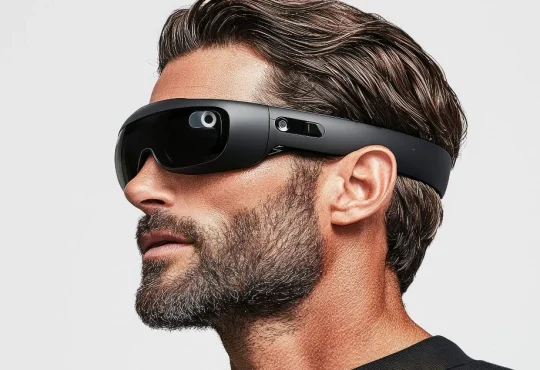In recent years, wearables have expanded far beyond fitness trackers and smartwatches for humans, reaching the realm of pets through advanced collars, harnesses, and sensor-based accessories. Health-monitoring smart collars, GPS-enabled trackers, and AI-driven wellness devices are now shaping a rapidly growing pet technology market. These innovations deliver more than simple location tracking, offering detailed insights into well-being, behavior, and daily activity. Next-generation pet wearables are emerging as essential tools in modern animal care, bridging the gap between companionship and technology-driven health management.
Why Pet Wearables Are Rising in Popularity
The rising demand for pet wearables reflects the evolving role of animals within households, moving beyond the traditional view of pets as companions to being recognized as integral family members. This shift has fueled interest in technologies that deliver advanced care and monitoring similar to human fitness trackers and smartwatches. Instead of relying solely on occasional veterinary visits, continuous access to real-time insights into health, behavior, and daily activity is becoming an essential aspect of modern pet care.
Several cultural and lifestyle factors are fueling this surge in wearable tech for pets:
- Health Awareness and Preventive Care: As veterinary science advances, owners are increasingly aware that subtle changes in behavior or activity can be early warning signs of health issues. Wearables that track heart rate, breathing patterns, and movement can help detect conditions like arthritis, obesity, or stress long before they become serious. This proactive approach not only safeguards pets’ health but also helps families avoid costly medical treatments down the line.
- Pet Safety Concerns: The fear of losing a pet is a universal concern. For dog parents navigating off-leash parks or cat owners with adventurous outdoor explorers, GPS-enabled collars provide constant reassurance. These devices don’t just help locate lost pets; features like geofencing notify owners the moment their companion wanders beyond a safe area, reducing anxiety and improving response times.
- Active Lifestyles and Human-Pet Parallels: As wearable adoption among humans skyrockets, it’s natural for pet owners to extend that health-tracking mindset to their animals. People who monitor their daily steps, calories, and sleep cycles are increasingly interested do doing the same for their dogs and cats—especially since pets’ activity levels are closely tied to their long-term health. Owners who jog, hike, or cycle often use pet trackers to measure whether their furry workout buddies are keeping pace.
- Peace of Mind and Emotional Connection: Beyond the complex data, pet wearables provide something less tangible but equally powerful: emotional reassurance. Many devices send updates directly to smartphones, allowing owners to check on their pets’ activity, rest, or even stress levels in real-time, even when they are at work or traveling. For those who view their pets as companions and confidants, these subtle digital reminders strengthen the sense of connection, even when they’re physically apart.
In essence, pet wearables are rising in popularity because they cater to the evolving role of pets in modern households. No longer seen as secondary to human routines, pets are now at the center of family life. As a result, the demand for smarter, safer, and more personalized care solutions continues to expand—making pet wearables less of a luxury and more of a must-have for responsible, tech-savvy owners.
Categories of Next-Gen Pet Wearables
1. Health Monitoring Devices
Think of these as Fitbits and Apple Watches for pets, but designed with fur, tails, and paws in mind. These wearables use sensors to track vital signs and behavior patterns:
- Heart Rate & Respiratory Monitoring: Collars with biometric sensors detect unusual spikes or drops, signaling stress or illness.
- Temperature Tracking: Helpful for breeds sensitive to heat or cold, especially during outdoor activities.
- Sleep Analysis: Just like humans, a pet’s sleep quality reflects its health. Devices can detect restless sleep, indicating discomfort or anxiety.
- Stress & Anxiety Detection: Some wearables measure changes in heart rate variability and movement, alerting owners to potential anxiety triggers.
Pro Tip: Health wearables are especially valuable for senior pets or breeds prone to chronic conditions. Early warnings can lead to faster treatments and a better quality of life.
2. GPS and Location Trackers
Lost pets are a nightmare. GPS-enabled wearables have become one of the most in-demand devices for pet owners. Today’s trackers are lightweight, waterproof, and incredibly accurate.
- Real-Time Location: Owners can pinpoint their pet’s exact position via smartphone apps.
- Geofencing: Create safe zones (yard, neighborhood). If your pet leaves the boundary, you receive an instant alert.
- Activity Routes: See where your dog roams during off-leash time or when on a walk with a dog sitter.
- Emergency Beacons: Some devices include SOS signals for emergencies, such as when your pet is stuck or injured.
3. Activity and Fitness Trackers
Obesity is a growing issue in pets, just like in humans. Wearables now track daily steps, calories burned, and playtime to ensure pets stay fit.
- Step Counters: Similar to human fitness trackers, but designed to calculate based on stride length and size.
- Calorie Burn Calculations: Paired with diet apps, they help balance food intake with energy spent.
- Exercise Goals: Owners can set activity targets based on their pet’s breed and age.
- Behavior Insights: Some wearables detect patterns, such as excessive scratching, licking, or inactivity, which may be possible signs of allergies or pain.
4. Smart Collars with Multi-Functionality
The future of wearables for pets is about all-in-one solutions. Smart collars combine health, GPS, and training functions:
- Two-Way Audio: Communicate with your pet remotely through the built-in speakers.
- LED Lights for Safety: Night walks are safer with collars that glow or flash.
- Training Assistance: Gentle vibration or sound cues to support training without harsh corrections.
- Data Syncing: Some collars integrate with veterinary apps, allowing health updates to be automatically stored for future visits.
5. Next-Level Innovations in Pet Wearables
The next-gen wave is already being tested in labs and startups:
- AI-Powered Predictive Health: Algorithms analyze patterns in vitals and activity to predict illnesses before symptoms appear.
- Pet-to-Human Translation: Experimental devices aim to interpret barks, meows, or tail wags into readable expressions of emotion.
- Bright Clothing: Vests with embedded sensors offer more comprehensive monitoring than collars.
- Augmented Reality Walks: Future AR-enabled wearables may gamify pet walks for both humans and pets.
Benefits for Owners and Vets
Wearables aren’t just for owners—they’re a game-changer for veterinarians too. Continuous data allows for better diagnostics and treatment plans. Instead of relying on symptoms observed during short vet visits, doctors get access to weeks or months of real-time data. Owners, meanwhile, gain reassurance, stronger bonds with their pets, and a way to tailor exercise, diet, and routines.
Challenges and Concerns
While next-gen pet wearables offer exciting possibilities, they’re not without limitations. As with any emerging technology, several challenges need to be addressed before these devices become universally accessible and reliable.
- Battery Life: One of the most common frustrations with pet wearables is the frequent need for recharging. Because most devices are compact and designed to be lightweight, they can only house small batteries. This means owners may need to recharge collars or trackers every few days, which is far from ideal—especially for GPS-enabled devices that consume more power. In situations where pets go missing, a drained battery could render the tracker useless at the worst possible moment. Manufacturers are exploring solutions such as solar-assisted charging and energy-efficient chips, but battery longevity remains a key challenge.
- Accuracy and Reliability: Tracking a pet’s health and activity is more complex than it sounds. Unlike humans, pets have fur that can interfere with sensors, variable body shapes that make it difficult to fit devices consistently, and unpredictable movement patterns that challenge the accuracy of data. For instance, a tracker might confuse a dog’s tail wagging with “steps” or miss subtle signs of restlessness if the sensors aren’t calibrated correctly. Over time, this could lead to misleading health insights, making reliability just as critical as innovation.
- Cost and Accessibility: High-quality pet wearables are not inexpensive. Many premium models range from $100 to $300, and several require monthly subscription fees for GPS tracking or data cloud storage. For multi-pet households, these costs add up quickly. While early adopters may accept the expense, mainstream adoption will hinge on whether companies can deliver affordable, durable options without sacrificing essential features. Until then, wearables may remain a luxury item rather than a universal tool for pet care.
- Privacy and Data Security: Just as with human wearables, data collection raises concerns. GPS tracking logs precise locations of both pets and their owners, while health metrics can reveal sensitive information. If hacked, this data could compromise personal security or be exploited by third parties. With the rise of “smart homes” and IoT devices, pet wearables add yet another potential entry point for cyber risks. Transparency from manufacturers about how data is stored, shared, and protected is essential to building trust among users.
The Future of Pet Wearables
Future developments in pet wearables indicate a growing integration between human and animal technology. Smartwatches and fitness devices are expected to sync seamlessly with smart collars, allowing for coordinated exercise and activity tracking. Veterinary telehealth platforms are also likely to incorporate wearable data for continuous remote monitoring, reducing the frequency of in-person clinic visits. With the advancement of artificial intelligence, predictive diagnostics have the potential to identify health risks earlier and extend the overall lifespan of companion animals.
A Smarter Era of Pet Wellness
Next-generation pet wearables extend well beyond novelty, redefining modern approaches to animal care. By monitoring activity, tracking location, and detecting early signs of health concerns, these devices integrate technology with responsibility and well-being. The human–animal bond has remained constant throughout history, yet the methods of care continue to evolve. With ongoing advances in innovation, design, and affordability, smart collars and similar devices are poised to become as commonplace in pet ownership as leashes and food bowls.





